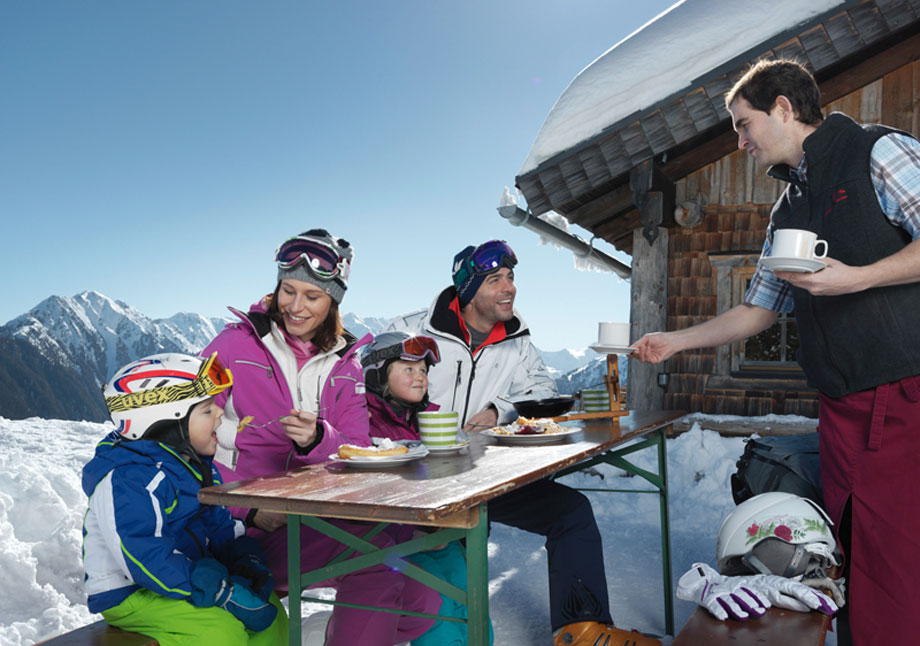National data
Tourism is an important industry for the economy of Austria. It contributed 7.6 % to the
GDP in the pre-pandemic year 2019 (2020: 4.5 %, 2021: 4.1 %), according to the Austrian
Tourism Satellite Account. Domestic and foreign guests spent around 37.9 billion euros in
2019 (2020: 21.3 billion euros; 2021: 20.8 billion euros).

Within the last decades, Austria has turned into one of the leading tourism destinations worldwide. Despite its small size and population, Austria has been among the 15 internationally most visited countries in recent years.
There are various reasons for this development: the majestic Alps, the Danube, beautiful rivers and lakes with drinking water quality, lovely cities, Austria's immemorial history and its richness of culture, the central location in the heart of Europe as well as its culinary art. Hospitality and service quality in small family businesses with strong regional and traditional bonds add to a unique and authentic tourism experience.
The added value of tourism (direct and indirect) accounts for 30.3 billion euros in 2019 (2020: 17.0 billion euros; 2021: 16.6 billion euros). In 2019, the average nominal tourism export per capita was 2 308 euros (2020: 1 360 euros; 2021: 801 euros).
While in 2019 the total full-time employment rate (direct and indirect) in tourism was 8.3 %, according to the Tourism Satellite Account, this rate dropped to 5.6 % in 2020 and 5.5 % in 2021 due to the COVID-19 pandemic.
Austria features
… 695 mountain peaks higher than 3 000 m, 6 national parks, 48 nature parks, around 600 mountain huts, 64 000 km hiking trails and more than 14 000 km cycling routes inviting guests to not only active but also relaxing outdoor holidays. The Alps cover nearly two-thirds of Austria's surface.
… 12 UNESCO world heritages and numerous UNESCO immaterial cultural heritages (such as the Christmas Carol "Silent Night", the Spanish Riding School and the Viennese coffee house culture); plenty of festivals and shows every year, stretching from small regional gatherings to major international events; *more than 12 900 plays and concerts per year attracting 5.4 million theatre lovers; 745 museums showing 800 annual special exhibitions; and 38 000 protected monuments that are part of the multifaceted cultural highlights of Austria.
… around 69 000 accommodation establishments with more than 1.3 million beds.
… 1 118 ropeway installations and 1 530 ski-tows as well as 23 700 hectares of ski slopes (of which 70 % can be covered by artificial snow), generating a cash turnover of around 1.4 billion euros, and turning Austria – where a total of 43.6 million skiing days are counted – into one of the top skiing destinations.
… numerous convention hotels, 88 convention and exhibition halls and many other special event locations, hosting around 10 400 congresses, conferences and seminars with half a million participants generating 811 000 overnights in 2021.
… about 75 thermal baths and countless wellness hotels and health resorts.
* Pre-pandemic figures
Guests in Austria
In 2019, 46.2 million guests were registered (of which 31.9 million were international tourists). They spent 152.7 million overnights in different accommodation facilities. This historic record is based on increasing demand with an average growth rate of 4 % per year between 2015 and 2019. While in 2020 and 2021 the COVID-19 crisis stopped the upward trend, tourism recovered significantly in 2022. Austria welcomed around 39.8 million guests (incl. 26.2 million international tourists), who spent 136.9 million overnights. Arrivals and overnight stays are 14 % and 10 % below the level of 2019. The three most important source markets are Germany, Austria and the Netherlands. They generate around 75 % of all overnights.
Destinations in Austria
Like in 2019, most of the guests in 2022 travelled to Tyrol, followed by Salzburg and the capital city Vienna. As the COVID-19 pandemic has caused particular challenges for city and MICE (meetings, incentives, congresses, events) destinations, the market share of Vienna (9.6 %) is still below pre-pandemic levels (2019: 11.5 %).
Based on summer 2022, the average expenditure per tourist and per night in Austria amounted to 163 euros (excluding passenger transport). In 2022, Austria’s guests stayed on average 3.4 days (2019: 3.3 days; 2020: 3.9 days; 2021: 3.6 days). In summer 2022, 78 % of all tourists travelled to Austria by car, 10 % by train, 5 % by plane as well as 3 % by caravan/camper.